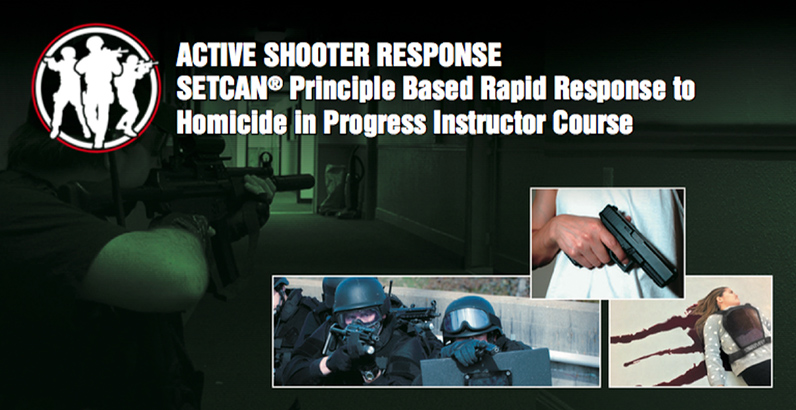|
Theory
The course begins with classroom discussion on past events and what can be learned from them. The primary principles are introduced along with discussion about identifying when a rapid response is appropriate versus a traditional surround and talk approach.
External Team Movement and Flanking Strategies
Whether approaching on foot or in a vehicle, there are strategies that can be used to lessen an officers exposure. The benefits of vehicle vs. foot approach are examined. Traditional military tactics used to cover open ground are discussed, along with flanking strategies.
Two, Three, Four, and Five Officer Team Movement and Tactics
The time waiting for a complete team to arrive at an incident may allow a gunman to continue attacking without interruption. With this in mind, a heavy emphasis is placed on operating as smaller teams such as two or three officer teams. This ensures the quickest response possible. Officers will also learn larger team movement strategies. The formations are formed with a logical progression so that officers arriving after a team is already formed can easily plug into a vacant position.
|
|
Rapid Stairwell Movement
Unfortunately a lot of programs utilize a traditional slow and methodical approach to moving through stairwells. In a situation that requires rapid response, officers must utilize tactics that allow them to move to the threat as quickly as possible. Officers will be shown how to “ride the rails” to allow for quick team movement up and down stairs.
Response to Explosive Devices
Explosive devices pose a unique threat as they have the ability to cause mass casualties and damage to structures. Officers must be prepared to deal with the possibility of explosive devices being used against them. Officers will learn strategies for both stationary and thrown explosive devices. Unlike systems that focus on solid formation, Setcan utilizes a unique approach that increases the continued response if attacked with explosive weapons.
Quick Room Entry Tactics
When innocent people are being killed, officers must quickly move to and stop the threat to save lives. Quick room entry tactics are utilized to interfere with attacks as soon as possible. Students will discuss strategies to overcome the stop in penetration that can occur at doorways. Although on the surface this area appears to be the easy tactic, evaluation of performance under stress shows this to be the most common location where team tactics break down.
|
|
Shotgun Door Breaching
When normal breaching tools are not available officers may have to utilize shotguns to assist in breaching doors. Students are exposed to the proper method of breaching outward and inward opening doors.
Scenario Based Training
The final day of training is completely scenario based. Students will be exposed to the most realistic training environment possible. Stressvest, Shocknife, Simulated Explosives, role players, fake blood, body parts, smoke, sirens, etc. ensure students are exposed to performing in a realistic, stressful environment. This day always reinforces why specific tactics have been selected over others as students quickly realize the incredible limitations to team performance once acute stress is added to the environment.
|


